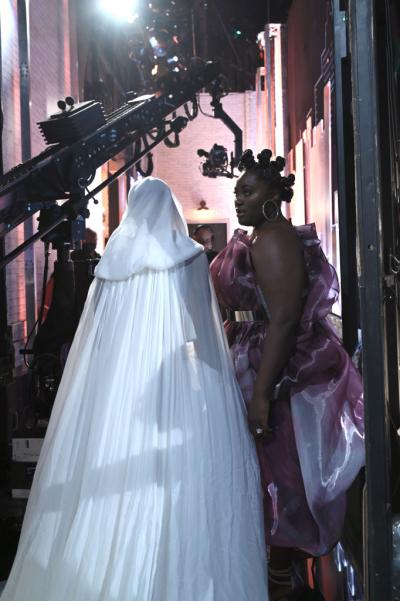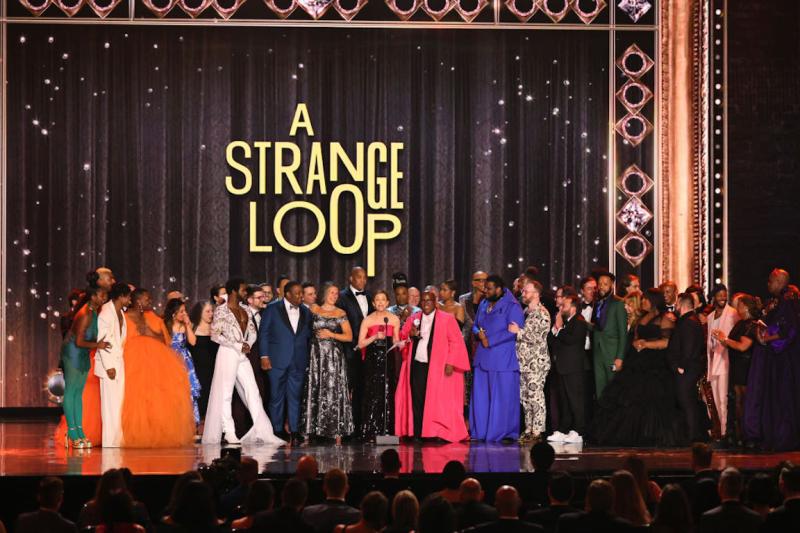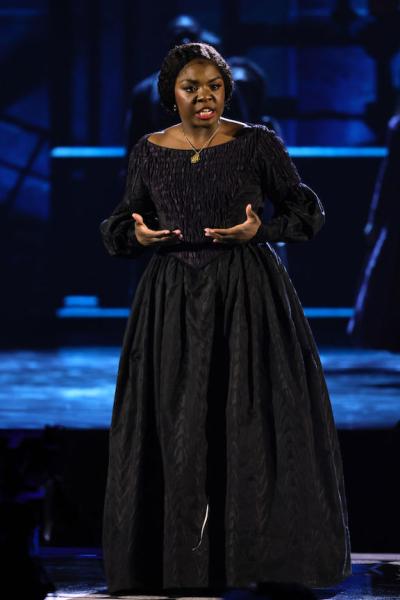Bob Dickinson of Full Flood led the lighting team for the 75th Tony Awards, broadcast live from Radio City Music Hall on CBS, Sunday, June 12, 2022. Things get tricky with a combination of award presentations and musical production numbers, but Dickinson and his team—including Ed McCarthy and Noah Mitz—are veteran Tony LDs, making sure the lighting takes into consideration the live audience and the millions of television viewers. Live Design chats with Dickinson about the lighting for this year’s Tony broadcast, with lighting gear provided by PRG.
Live Design: How do you approach a show like the Tonys each year?
Bob Dickinson: Early in the process we work with Steve Bass (production designer) and his team on any new scenery for the main set and awards portions of the show. Noah, Ed, and I work with Tyler Ericson to update this year’s lighting plot and then we coordinate with the technical team including our gaffer Richie Beck Jr, staging supervisor RJ Styles, and Chris Whitacre, the production rigger to make sure we are set for success.
As soon as the nominations are announced we get to work on the specific performances. Ed McCarthy sees each of the shows shortly after nomination and begins the dialogue with the show LDs. The Broadway productions desire is to replicate their scenic and lighting. Due to the wonder of screens, a large portion of the scenery can be virtually replicated….but lighting needs to be cued from scratch. Our goal is to capture the intent, specificity, and energy of the show cuing, but the rub is we have a big rig that is designed to work for all the shows, and the television broadcast as a whole and not their specific show. Noah oversees the development of the plot, interfaces with the art dept, and generally works to bridge the goals of the nominated shows with needs and limitations of the TV show. Most important is to understand what rehearsal time allows for, which is very little! The musical Six is a show with several thousand cues, a circumstance we cannot replicate. Fortunately they were prepped and knew that our version will reflect the amazing energy, but not the intricacy of their cuing.
LD: Were there any specific challenges this year—what are the biggest challenges for the Tony broadcast in general?
BD: The three biggest challenges are Time, Time and Time…..and also budget. This year Covid protocols made it slow going as masks worn during rehearsals make it difficult to evaluate key lighting, but also the limitation as to whom was allowed in the building at any given time. PCR tests, daily Covid screenings.
LD: Can you talk about the choice of the fixtures this year, what was in your 'arsenal' and how was the rig designed, does it change much from year to year at Radio City
BD: The rig has evolved greatly over the years. With the advent of remote followspots and new LED instrumentation that offer effects and consistent color, we are able to achieve better cues. Especially the decision to retrofit the amazing workhorse VL5 with a LED source, assuring it being available for years to come. We use these old instruments to create visual weight to the overhead rig. Because of their big moon face they are great as “hokum”, filling the big negative space overhead. Television recently has enjoyed the introduction of amazing remote cameras, jibs, dollies and cable cams. The problem with these cameras is that they use wider lensing and physically get much closer to the talent, at times within inches of a face! These super wide angle cameras see far more scenery/lighting rig and therefore associated flares, and require constant coordination between cameras and lighting departments to avoid shadows being cast on the stage and talent.

LD: Who is running the show in the theatre?
BD: The lighting cues are called by Ed McCarthy sitting with me in the video truck. For the rehearsals I am out in the theater with Glenn Weiss the producer/director. Unlike most shows, the Tony Awards have the show directors and producers in the audience, not to mention show production designers, choreographers and lighting designers…..all with opinions!

LD: How do you adjust for the live audience vs. the home audience?
BD: Television is natively less tolerant of contrast than the eye, which requires us to homogenize the overall light levels more than for a simple live performance. Extreme contrast is also a tool used in live performance, where the entire audience sees a constant wide shot. Television uses closeups to instruct the audience where to look, but live theater uses intensity to inform the audience where to look. It is not unusual for the lead singer or speaker to be several hundred foot-candles brighter than the rest of the scene. If the cameras iris were to accommodate for the brighter lead, the rest of the scene would disappear. We key light at forty foot-candles and light the rest of the scene with light levels below that. A contrast ration in television is limited to 10 to 1, where the human eye can tolerate many thousands to one. This reality is difficult for non-video directors, LDs and producers to embrace, but once we train their view to the monitor instead of looking directly at the stage, they usually approve.
LD: Color palette? Choice of colors?
BD: With the advent of intelligent instrumentation, color has become the most overused lighting tool. In order to preserve the import and impact of color, we design generic, non-music cues using shades of white. This allows the extravagant and satisfying color cues to really be meaningful. The rarity of extreme color during the rest of the broadcast is like a diet….boring but necessary!

LD: How does the lighting of the production numbers work? Do the shows' lighting designers get involved?
BD: Whether the designers are at the rehearsals or not, we endeavor to replicate the tone and ambitions of the stage cuing. Of course, given the fact that we only get about an hour to do the entire rehearsal, soup to nuts, it is difficult to get the kind of intricacies that the stage cues achieve. The musical Six had many hundreds of cues for the segment on the Tonys, we had to suffice with several dozen cues. The creative teams from most of the shows appreciate the nod to the intent of their cuing.
LD: What were you most pleased with this year?
BD: I was very pleased with the overall quality of the broadcast. Our team and the amazing Local #1 stage crew go the extra mile knowing this show best represents the heart of Broadway. I was very happy with all the musical numbers, even Company, which involved lighting over a dozen performers in a box!